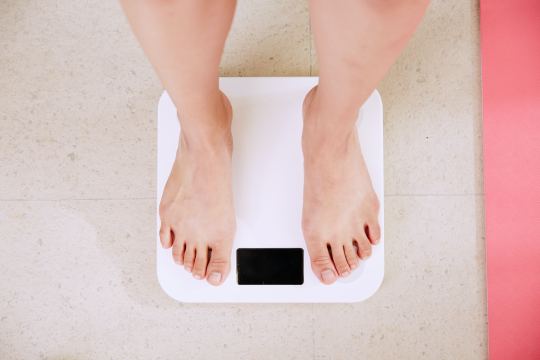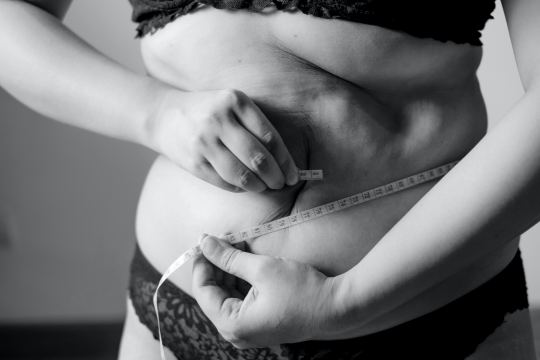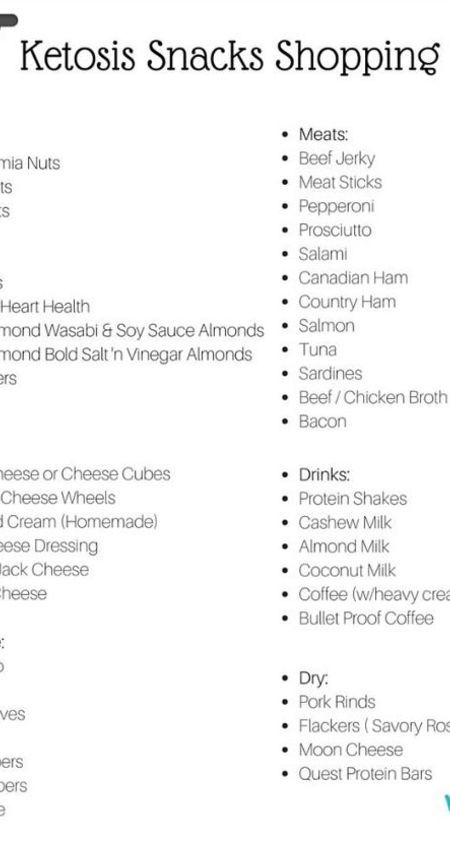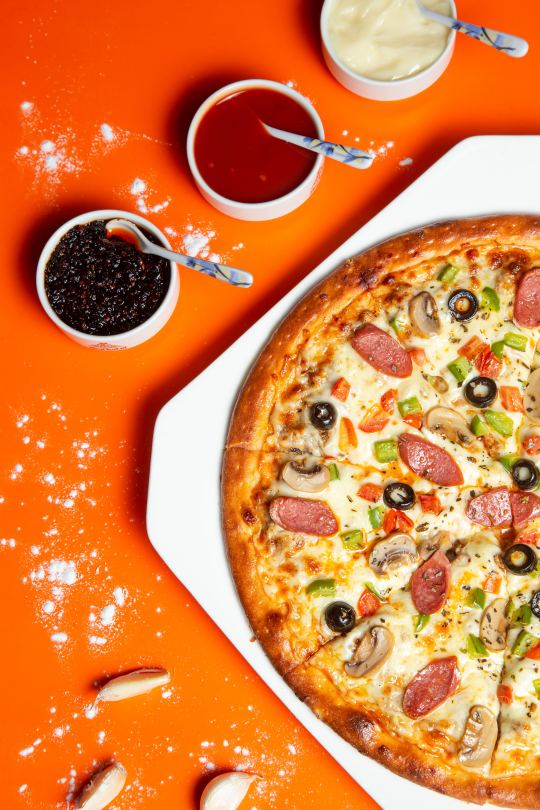#ketotip
Explore tagged Tumblr posts
Text
Want to start keto but don’t know where to begin? 🥑🔥
I’m giving away a FREE Keto Diet Book to help you get started the right way! It’s packed with easy-to-follow tips, delicious recipes, and everything you need to make keto work for you.
No strings attached—just complete a few simple steps, and it’s yours! 📖💡
If you’re serious about keto and ready to see real results, don’t miss out! Drop a comment or check the link to grab your free copy. 👇 Download Now

#keto diet#ketodiet#keto#ketoweightloss#lowcarb#lowcarblifestyle#ketogenic#ketogenicdiet#ketolife#ketorecipes#ketotransformation#tumblrlife#dietmotivation#fitnessjourney#ketocommunity#ketofriendly#freeebook#ketobook#freeguide#ketotips#ketojourney#dietplan
2 notes
·
View notes
Text
#keto#ketodiet#ketomeals#ketofood#ketodietforbeginners#whatisketo#ketorecipes#ketobreakfast#ketone#ketotips#lazyketo#ketosnacks
2 notes
·
View notes
Text
How Atkins and the Keto Diet are Similar but Different
Low-carbohydrate diets have been gaining popularity in recent years due to their potential health benefits and effectiveness in aiding weight loss. Among the many low-carb diets, the Atkins and Keto diets are two of the most well-known. Although they share some similarities, there are also some significant differences between the two. In this article, we will explore the similarities and differences between the Atkins and Keto diets and help you decide which one is best for you.

Introduction
The Atkins and Keto diets are two popular low-carb diets that have gained significant attention in recent years for their potential weight loss and health benefits. Both diets restrict carbohydrate intake and focus on increasing fat and protein consumption, but they differ in their approach to macronutrient ratios and overall health benefits. This article will explore the similarities and differences between the Atkins and Keto diets, as well as their potential risks and benefits. It will also provide tips for incorporating these diets into a healthy and sustainable lifestyle. If you want to learn more on the Keto Diet read Dr. Dexters Keto Guide for a more full overview of the keto diet and get keto tips.
Definition of low-carb diets
Low-carbohydrate diets are diets that restrict or limit the intake of carbohydrates, including sugars and starches, and focus on consuming protein and fat instead. The goal of a low-carb diet is to force the body to burn fat for fuel instead of glucose, which can lead to weight loss and improved health.
Importance of low-carb diets
Low-carb diets have been shown to have many potential health benefits, including improved blood sugar control, lower blood pressure, and reduced inflammation. They may also aid in weight loss and improve cardiovascular health.
Brief history of Atkins and Keto diets
The Atkins diet was developed by Dr. Robert Atkins in the 1960s and gained popularity in the 1990s. The Keto diet, on the other hand, is a more recent development, gaining popularity in the early 2010s. Both diets are based on the principles of low-carb eating, but they differ in their macronutrient ratios and other factors.

What is Atkins Diet?
The Atkins Diet is a low-carbohydrate diet that was popularized in the 1970s by Dr. Robert Atkins. The diet is based on the theory that limiting carbohydrates and increasing protein and fat intake will lead to weight loss and improved health. The Atkins Diet consists of four phases: induction, ongoing weight loss, pre-maintenance, and maintenance. During the induction phase, carbohydrate intake is limited to 20 grams per day. As the diet progresses, carbohydrates are gradually reintroduced.
Definition of Atkins diet
The Atkins diet is a low-carb, high-fat diet that is divided into four phases. The first phase, known as the induction phase, restricts carbohydrate intake to 20 grams per day and focuses on protein and fat consumption instead.
Phases of Atkins diet
The four phases of the Atkins diet are:
Induction: This phase restricts carbohydrate intake to 20 grams
Ongoing weight loss: In this phase, carbohydrate intake is gradually increased to find the optimal carb level for weight loss.
Pre-maintenance: This phase increases carbohydrate intake even further to prepare the body for maintenance.
Maintenance: This phase is the long-term maintenance phase where carbohydrate intake is increased to a sustainable level.
Foods to eat and avoid on Atkins diet
Foods that are allowed on the Atkins diet include meat, fish, eggs, cheese, vegetables, and healthy fats. Carbohydrate-rich foods like bread, pasta, and sugary foods are restricted.

What is Keto Diet?
The Keto Diet, short for ketogenic diet, is a low-carbohydrate, high-fat diet that aims to put the body into a state of ketosis. This is achieved by drastically reducing carbohydrate intake and increasing fat consumption. When the body is in ketosis, it burns fat for energy instead of carbohydrates. The diet has gained popularity for its potential benefits in weight loss, diabetes control, and improved mental clarity.
Definition of Keto diet
The Keto diet, also known as the ketogenic diet, is a very low-carb, high-fat diet that is designed to put the body in a state of ketosis. Ketosis is a metabolic state where the body burns fat for fuel instead of glucose.
Phases of Keto diet
There are no specific phases of the Keto diet. Instead, the focus is on maintaining a consistent state of ketosis by consuming a very low amount of carbohydrates.
Foods to eat and avoid on Keto diet
Foods that are allowed on the Keto diet include meat, fish, eggs, cheese, vegetables, and healthy fats. Carbohydrate-rich foods like bread, pasta, and sugary foods are strictly limited.

Comparison of Atkins and Keto Diets
Both the Atkins and Keto diets are low-carbohydrate, high-fat diets that aim to promote weight loss and improve health. However, the Keto diet is stricter in terms of carbohydrate intake and focuses on achieving ketosis, while the Atkins diet has four phases with varying carbohydrate levels. The Atkins diet may be more flexible but can lead to more gradual weight loss, while the Keto diet is more restrictive but can result in quicker weight loss.
Differences in macronutrient ratios
The Atkins diet typically has a higher protein intake than the Keto diet. The Keto diet is a very high-fat diet, with up to 75% of calories coming from fat, while the Atkins diet is a moderate-fat diet with around 40% of calories coming from fat.
Differences in carb intake
The induction phase of the Atkins diet restricts carbohydrate intake to 20 grams per day, while the Keto diet typically restricts carbohydrate intake to 20-50 grams per day.
Differences in protein intake
The Atkins diet typically has a higher protein intake than the Keto diet. This is because the induction phase of the Atkins diet focuses on high protein consumption.
Differences in fat intake
The Keto diet is a very high-fat diet, with up to 75% of calories coming from fat, while the Atkins diet is a moderate-fat diet with around 40% of calories coming from fat.
Differences in health benefits
Both diets have been shown to have potential health benefits, such as improved blood sugar control and weight loss. However, the Keto diet may have additional benefits for neurological conditions such as epilepsy.
Differences in weight loss results
Both diets have been shown to be effective for weight loss, but the Keto diet may lead to more rapid weight loss in the short term.
Differences in potential side effects
The Atkins diet may cause side effects such as constipation, bad breath, and high cholesterol levels. The Keto diet may cause side effects such as the "Keto flu," which is characterized by headaches, nausea, and fatigue.
Which Diet is Better for You?
Factors to consider when choosing a low-carb diet
When choosing a low-carb diet, factors to consider include personal health goals, lifestyle, and food preferences.
Pros and cons of Atkins diet
Pros of the Atkins diet include rapid weight loss and potential health benefits. Cons of the Atkins diet include potential side effects and a restrictive induction phase.
Pros and cons of Keto diet
Pros of the Keto diet include rapid weight loss and potential health benefits, especially for neurological conditions. Cons of the Keto diet include potential side effects and the restrictive nature of the diet, which may make it difficult to follow long-term.
Conclusion: Atkins vs Keto
While both the Atkins and Keto diets are low-carb diets that focus on weight loss and improving health, they have some key differences in their macronutrient ratios, carb intake, protein intake, and health benefits. Ultimately, the best diet for an individual will depend on their personal health goals, lifestyle, and food preferences.
FAQs
1. Can the Atkins and Keto diets be followed by vegetarians or vegans?
Both diets can be adapted for vegetarians or vegans, but it may require more planning and effort to ensure adequate protein intake.
2. Can the Atkins and Keto diets be followed long-term?
While both diets can be followed long-term, it is important to consult with a healthcare professional to ensure that the diet is meeting all nutritional needs.
3. Are there any risks associated with following a low-carb diet like Atkins or Keto?
There are potential risks associated with following a low-carb diet, such as nutrient deficiencies, constipation, and the potential for high cholesterol levels. It is important to consult with a healthcare professional before starting any new diet.
4. Can the Atkins and Keto diets be followed by people with diabetes?
Both diets may be beneficial for people with diabetes, but it is important to consult with a healthcare professional to ensure that the diet is properly managed and monitored.
5. Are there any foods that are allowed on one diet but not the other?
While there may be some differences in specific foods that are allowed or restricted on the Atkins and Keto diets, both diets focus on limiting carbohydrate intake and increasing healthy fat and protein consumption.
#atkins#ketodiet#ketorecipes#ketotips#lowcarb#low carb diet#banting#banting diet#ketosis#atkins diet#what is the atkins diet#keto#LCHF#Keto LCHF#weight loss#diet and health#diet advice#diet guide#tips for keto#low carb high fat#ketosis diet
4 notes
·
View notes
Text
Is Coconut Milk Keto Friendly? Your Ultimate Guide
🥥 Keto & coconut milk lovers, this one's for you! Find out if your favorite creamy addition is keto-friendly. Get the facts before you sip! 💧
0 notes
Text
"Keto Quick Start: A Professional Guide to Launching Your Ketogenic Journey"

Keto Quick Start Guide: Your Professional-Level Path to Ketosis
1. Understanding the Keto Diet: A Primer
Before diving into the keto lifestyle, it's crucial to grasp its foundational principles. The ketogenic diet is a high-fat, moderate-protein, and very low-carbohydrate eating plan designed to shift your body’s metabolism from burning glucose to burning fat. This metabolic state, known as ketosis, can lead to effective fat loss and improved energy levels.
You should try this Keto Quick Start
2. Setting Realistic Goals and Expectations
Establishing clear, attainable goals is vital for a successful keto journey. Whether your aim is weight loss, enhanced mental clarity, or better energy levels, defining these objectives will help you stay motivated and track your progress effectively.
3. Essential Macronutrient Ratios for Ketosis
To achieve and maintain ketosis, it's important to adhere to specific macronutrient ratios. Typically, a keto diet comprises about 70-75% fat, 20-25% protein, and 5-10% carbohydrates. Understanding these ratios and how to apply them in meal planning is fundamental to your success.
4. Crafting a Keto-Friendly Meal Plan
A well-structured meal plan is key to staying on track with keto. Focus on incorporating a variety of high-fat, low-carb foods such as avocados, nuts, and fatty fish. Planning your meals in advance can prevent unplanned deviations and help you stay within your macronutrient goals.
5. Essential Foods to Embrace and Avoid
Knowing which foods to include and avoid is crucial for maintaining ketosis. Embrace healthy fats like olive oil and coconut oil, while avoiding high-carb items such as bread, pasta, and sugary treats. This section will provide a comprehensive list of keto-friendly and non-keto foods.
You should try this Keto Quick Start
6. Navigating the Keto Flu: Symptoms and Solutions
As your body transitions into ketosis, you might experience what is known as the "keto flu," characterized by symptoms such as fatigue, headaches, and irritability. Understanding these symptoms and implementing strategies to mitigate them can ease your transition and improve your overall experience.
7. Effective Strategies for Dining Out on Keto
Eating out while following a keto diet can be challenging but manageable with the right strategies. Opt for restaurants with customizable menu options, and learn how to modify dishes to fit your keto needs. This section will offer practical tips for dining out without derailing your progress.
8. The Role of Supplements in a Keto Diet
Supplements can play a significant role in supporting your keto lifestyle. Commonly recommended supplements include electrolytes, omega-3 fatty acids, and exogenous ketones. Learn about the benefits and proper usage of these supplements to enhance your ketogenic journey.
9. Tracking Your Progress: Tools and Techniques
Monitoring your progress is essential for staying on track and making necessary adjustments. Explore various tools and techniques for tracking ketone levels, blood sugar, and body measurements. Utilizing these tools will help you make informed decisions about your diet and overall health.
10. Overcoming Common Challenges and Staying Motivated
Adhering to a keto diet can present challenges, from social pressures to personal cravings. This section will provide practical solutions for overcoming these obstacles and maintaining motivation, including tips for dealing with plateaus and celebrating your achievements.
You should try this Keto Quick Start
Disclaimer
There are some affiliate links in this article which may makes me some profit.
#KetoDiet#KetoQuickStart#KetogenicLifestyle#LowCarbLiving#HealthyEating#KetoJourney#Ketosis#KetoTips#KetoRecipes#KetoSuccess#FatFueled#KetoLifestyle#KetoForBeginners#KetoGoals#CleanEating#KetoCommunity#KetoFoodie#KetoTransformation#HealthAndWellness#KetoHealth
1 note
·
View note
Text
How good are ketogenic foods for weight loss?

Reduced Carbohydrate Intake: By significantly lowering carbohydrate intake, the body enters a state of ketosis, where it burns fat for fuel instead of glucose. This shift can lead to rapid weight loss, particularly in the initial stages as the body sheds water weight associated with glycogen stores.
Increased Satiety: Ketogenic foods are typically high in fats and moderate in proteins, both of which are more satiating than carbohydrates. This can lead to reduced overall calorie intake as people feel fuller for longer periods and are less likely to overeat or snack between meals.
Improved Insulin Sensitivity: Reducing carbohydrate intake can lead to lower blood sugar levels and improved insulin sensitivity. This helps in managing hunger and cravings, making it easier to stick to a calorie deficit necessary for weight loss.
Preservation of Muscle Mass: The moderate protein intake in a ketogenic diet helps preserve lean muscle mass, which is crucial for maintaining a healthy metabolism. Muscle tissue burns more calories at rest compared to fat tissue, which can support ongoing weight loss.
Enhanced Fat Burning: Ketogenic diets increase the body’s ability to burn fat for energy. By consistently providing the body with high-fat foods, it becomes more efficient at breaking down fat stores, leading to weight loss.
Reduction in Appetite-Stimulating Hormones: Ketogenic diets have been shown to reduce levels of ghrelin, the hormone that stimulates appetite. This reduction can decrease feelings of hunger and make it easier to maintain a lower calorie intake.
Stable Energy Levels: By avoiding the blood sugar spikes and crashes associated with high-carb diets, individuals on a ketogenic diet often experience more stable energy levels. This can lead to improved physical activity and better adherence to the diet, both of which contribute to weight loss.
While ketogenic foods can be very effective for weight loss, it is essential to ensure the diet is well-balanced and includes a variety of nutrient-dense foods. Consulting with a healthcare provider or nutritionist can help tailor the ketogenic diet to individual needs and goals, maximizing its benefits while minimizing potential risks.The ketogenic diet is a very low-carb, high-fat diet
#KetoDiet#LowCarb#HighFatLowCarb#Ketosis#KetoLife#KetoFriendly#KetogenicLifestyle#KetoFoods#KetoRecipes#KetoMeals#KetoSnacks#KetoBreakfast#KetoLunch#KetoDinner#KetoDesserts#HealthyFats#KetoCommunity#KetoJourney#KetogenicLiving#KetoInspiration#KetoWeightLoss#KetoTips#KetoForBeginners#KetoSuccess#KetoTransformation#KetoMotivation#KetoResults#KetoLifestyleChange#KetoCleanEating#KetoOnTheGo
1 note
·
View note
Text
Beginner Keto Diet Plan

Kickstart your transformation with our foolproof Keto Diet Plan for Beginners. Trust us, you've got this.
0 notes
Text
youtube
CLICK HERE TO GET YOUR CUSTOM KETO DIET PLAN
What Is Keto Diet?
The ketogenic diet, commonly known as the keto diet, has gained immense popularity in recent years. From fitness enthusiasts to health-conscious individuals, many people are adopting this low-carb, high-fat eating plan as a way to achieve weight loss, improve overall health, and boost energy levels. In this blog, we will delve into the science behind the ketogenic diet, understand how it works, explore its potential benefits, and offer some practical tips for those considering embarking on this transformative journey.
#keto#ketone#isketo#ketosis#ketones#keto101#ketoflu#ketodiet#ketotips#ketomenu#easyketo#lazyketo#ketogeen#ketofood#keto2023#diet#ketogenic#keto guide#ketolife#low carb#Youtube
0 notes
Text
#keto#ketodiet#ketomeals#ketofood#ketodietforbeginners#whatisketo#ketorecipes#ketobreakfast#ketone#ketotips#lazyketo#ketosnacks
2 notes
·
View notes
Text
How to Make Keto Pizza: A Step-by-Step Guide
Pizza is a popular food all over the world. But for those following the keto diet, traditional pizza is not an option due to its high carb content. However, that doesn't mean you have to give up pizza entirely. With a few modifications, you can make a delicious keto-friendly pizza. In this article, we'll show you how to make keto pizza from scratch, step by step. For more keto tips see our Tumblr site here.

Introduction to Keto Pizza
Pizza is a popular food around the world, loved for its delicious taste and endless topping options. However, traditional pizza can be high in carbs, making it unsuitable for those following a keto diet. This is where keto pizza comes in - a low-carb alternative that allows you to enjoy the deliciousness of pizza while staying true to your dietary goals. For more Keto Pizza Recipes here.
Here are some key differences between keto pizza and regular pizza:
Keto Pizza:
· Uses a low-carb crust, such as cauliflower crust or almond flour crust
· Uses keto-friendly sauce, cheese, and toppings that are low in carbs
· Is high in healthy fats and protein, which helps to keep you full and satisfied
· Can be customized to fit your dietary needs, such as gluten-free or dairy-free options
· May have a different texture and taste than regular pizza
Regular Pizza:
· Uses a high-carb crust made from wheat flour
· Uses regular tomato sauce, cheese, and toppings that may be high in carbs
· Is typically lower in protein and healthy fats than keto pizza
· May not be suitable for those with dietary restrictions or preferences

Has a distinct texture and taste that may be difficult to replicate with keto-friendly ingredients
When it comes to taste, keto pizza may not be exactly the same as regular pizza, but it can still be delicious in its own right. Many people find that they enjoy the unique taste and texture of keto pizza, and appreciate the fact that they can indulge in this comfort food while sticking to their dietary goals.
In conclusion, while keto pizza may be different from regular pizza, it is still a great option for those following a keto diet who want to enjoy a delicious, healthy version of this popular comfort food. By choosing the right ingredients and toppings, you can create a pizza that is both low in carbs and high in flavor. So why not give it a try and see for yourself how delicious keto pizza can be?

What is the Keto Diet?
The ketogenic diet, or keto diet for short, is a low-carb, high-fat diet that has been shown to be effective in promoting weight loss and improving overall health. The goal of the keto diet is to enter a state of ketosis, where the body uses fat for fuel instead of carbohydrates.
Why Make Keto Pizza? Pizza is a beloved food that many people crave, even when they're on a diet. Unfortunately, traditional pizza is not an option for those following a keto diet, as the high carb content in the crust and toppings can quickly exceed their daily carb limit. However, making a keto-friendly pizza allows you to enjoy this comfort food while still staying true to your dietary goals.
One of the main benefits of making a keto pizza is that it allows you to indulge in your cravings without feeling guilty. Traditional pizza is typically high in carbs, which can cause blood sugar spikes and lead to weight gain. On the other hand, a keto pizza is low in carbs, high in healthy fats, and can even help you stay in ketosis.
Another benefit of making a keto pizza is that it's incredibly versatile. You can experiment with different crusts, such as cauliflower, almond flour, or coconut flour, and customize your toppings to suit your tastes. Whether you prefer a classic pepperoni pizza or a more exotic combination of flavors, there's a keto-friendly pizza out there for everyone.

Making a keto pizza also allows you to stay on track with your dietary goals. When you're following a strict diet, it's easy to feel deprived and crave the foods you can't have. By making a keto-friendly version of your favorite foods, you can satisfy your cravings and still stick to your diet plan.
In summary, making a keto-friendly pizza is a great way to enjoy this beloved comfort food while still staying true to your dietary goals. With a variety of crust and topping options available, you can customize your pizza to suit your tastes and experiment with different flavors. Plus, indulging in a guilt-free pizza can help you stay on track with your diet and avoid feelings of deprivation.
Keto Pizza Versus Traditional Pizza
Pizza is a beloved food that many people enjoy, but traditional pizza is often high in carbs and not suitable for those following a keto diet. Fortunately, there are now plenty of options for making a keto-friendly pizza that is low in carbs and still packed with flavor. Here are some differences between keto pizza and traditional pizza:
Keto Pizza:
Uses low-carb crust options such as cauliflower crust or almond flour crust
Uses keto-friendly ingredients such as low-carb sauce, cheese, and toppings
Is high in healthy fats and low in carbs
Can be customized to fit specific dietary needs, such as gluten-free or dairy-free
May have a different texture and flavor than traditional pizza
Traditional Pizza:
Uses high-carb crust made from wheat flour
Uses traditional tomato sauce, cheese, and toppings that may be high in carbs
Is higher in carbs and lower in healthy fats
May not be suitable for those with dietary restrictions or preferences
Has a distinct texture and flavor that may be difficult to replicate with keto-friendly ingredients

Comparison Keto Pizza Versus Traditional Pizza
Keto Pizza
Traditional Pizza
Low-carb crust options
High-carb wheat flour crust
Keto-friendly ingredients
Traditional tomato sauce, cheese, and toppings
High in healthy fats, low in carbs
Higher in carbs, lower in healthy fats
Customizable for dietary needs
May not be suitable for dietary restrictions or preferences
Different texture and flavor
Distinct texture and flavor
When it comes to choosing between keto pizza and traditional pizza, it ultimately comes down to personal preference and dietary goals. If you're following a keto diet and want to enjoy pizza while still staying on track with your goals, a keto pizza is a great option. If you don't have any dietary restrictions and enjoy the classic taste and texture of traditional pizza, then a traditional pizza may be the way to go.
In conclusion, while there are differences between keto pizza and traditional pizza, both can be enjoyed in moderation as part of a healthy, balanced diet. By choosing the right ingredients and crust options, you can create a delicious pizza that fits your dietary needs and preferences.

Keto Pizza Crust Options
When it comes to making a keto pizza, one of the most important considerations is the crust. Traditional pizza crust is typically made from wheat flour, which is high in carbs and not suitable for a keto diet. Fortunately, there are several low-carb crust options that can be used to create a delicious and satisfying pizza.
Here are some popular keto-friendly crust options for your pizza:
Cauliflower crust: Made from grated cauliflower, cheese, and eggs, this crust is a popular choice for keto pizza. It's low in carbs, high in fiber, and has a crispy texture that mimics traditional pizza crust.
Almond flour crust: Almond flour is a great alternative to wheat flour for those following a keto diet. It's high in healthy fats, low in carbs, and has a slightly nutty flavor that complements pizza toppings well.
Coconut flour crust: Coconut flour is another popular option for making a keto pizza crust. It's high in fiber, low in carbs, and has a subtle coconut flavor that pairs well with a variety of toppings.
When choosing a crust for your keto pizza, it's important to consider your personal taste preferences and dietary goals. Some crusts may be higher in carbs than others, so it's important to read labels carefully and choose a crust that fits within your daily carb limit.
In summary, there are several keto-friendly crust options available for making a delicious and satisfying pizza. Whether you prefer a cauliflower crust, almond flour crust, or coconut flour crust, there's a crust out there to suit your tastes and dietary needs. By experimenting with different crusts and toppings, you can create a keto pizza that's both healthy and delicious.
How to Make Keto Pizza Crust
To make a cauliflower crust, you'll need to grate cauliflower and then cook it in the oven until it's tender. Then, mix it with almond flour, egg, and cheese, and spread it out on a baking sheet. Bake the crust for a few minutes until it's golden brown and then add your sauce and toppings.
To make an almond flour crust, you'll need almond flour, egg, and cheese. Mix these ingredients together until a dough forms, and then spread it out on a baking sheet. Bake the crust until it's golden brown and then add your sauce and toppings.
To make a coconut flour crust, you'll need coconut flour, egg, and cheese. Mix these ingredients together until a dough forms, and then spread it out on a baking sheet. Bake the crust until it's golden brown and then add your sauce and toppings.

Keto Pizza Sauce
Traditional pizza sauce is typically high in sugar and carbs, so it's not a good option for those following the keto diet. Instead, you can make your own keto-friendly pizza sauce using tomato paste, garlic, and herbs.
To make the sauce, simply mix together tomato paste, minced garlic, and your favorite herbs, such as oregano, basil, and thyme. Add a little bit of water to thin the sauce to your desired consistency.
How to Make Keto Pizza Sauce
When it comes to making a keto pizza, the sauce is just as important as the crust. Traditional pizza sauce is often made with high-sugar ingredients, such as canned tomatoes and sugar, which can quickly add up in carbs. Fortunately, there are plenty of keto-friendly pizza sauce options that are low in carbs and still packed with flavor.
Here are some tips on how to make a keto-friendly pizza sauce:
Choose the right tomatoes: When making a pizza sauce, it's important to choose the right type of tomatoes. Look for canned whole peeled tomatoes that have no added sugar. You can also use fresh tomatoes if you prefer.
Use high-quality olive oil: Olive oil is a staple of Mediterranean cuisine and is a healthy fat that is ideal for a keto diet. Use high-quality olive oil to give your pizza sauce a rich, flavorful base.
Add garlic and herbs: Garlic and herbs are a great way to add flavor to your pizza sauce without adding carbs. Some good options include basil, oregano, and thyme.
Use a blender: To achieve a smooth, creamy consistency, use a blender or food processor to puree your pizza sauce ingredients. This will help to evenly distribute the flavors and ensure that your sauce is the perfect texture for your pizza.
Here's a simple recipe for a keto-friendly pizza sauce: Ingredients:
1 can whole peeled tomatoes
2 cloves garlic, minced
2 tablespoons olive oil
1 teaspoon dried basil
1 teaspoon dried oregano
Salt and pepper to taste
Instructions:
Add the whole peeled tomatoes to a blender or food processor and pulse until smooth.
In a saucepan, heat the olive oil over medium heat. Add the minced garlic and cook until fragrant, about 1-2 minutes.
Add the tomato puree to the saucepan and stir to combine. Add the dried basil and oregano, and season with salt and pepper to taste.
Bring the sauce to a simmer and cook for 10-15 minutes, stirring occasionally, until the sauce has thickened.
Remove from heat and allow the sauce to cool before using it to top your keto pizza.
In summary, making a keto-friendly pizza sauce is easy and requires just a few simple ingredients. By using canned whole peeled tomatoes, high-quality olive oil, and flavorful herbs and spices, you can create a delicious sauce that's low in carbs and perfect for your keto pizza.

Keto Pizza Toppings
The toppings you choose for your keto pizza will depend on your personal preferences. Some good options include:
Mozzarella cheese
Pepperoni
Sausage
Bacon
Mushrooms
Olives
Bell peppers
Onions
Tips for Making the Perfect Keto Pizza
Making a keto pizza can be a bit challenging, but with these tips, you can make a delicious pizza that's both healthy and satisfying:
Make sure your crust is cooked thoroughly before adding your sauce and toppings. This will ensure that your crust is crispy and won't become soggy.
Use a pizza stone or a cast-iron skillet to bake your pizza. These will help to distribute the heat evenly and ensure that your pizza cooks evenly.
Don't overload your pizza with toppings. Too many toppings can make your pizza soggy and difficult to eat.
If you're using vegetables as toppings, be sure to cook them beforehand. This will help to remove any excess moisture and prevent your pizza from becoming soggy.
Use high-quality ingredients. Since the toppings are the star of the show, it's important to use fresh, high-quality ingredients for the best flavor.
Frequently Asked Questions About Keto Pizza
Can I use a pre-made crust for my keto pizza? Yes, you can use a pre-made crust, but be sure to read the ingredients to ensure that it's keto-friendly.
How many carbs are in a keto pizza? The number of carbs in a keto pizza will depend on the crust and toppings you use. However, a typical serving of keto pizza will have around 5-10 grams of carbs.
Can I freeze leftover keto pizza? Yes, you can freeze leftover keto pizza. Simply wrap it in plastic wrap or aluminum foil and store it in the freezer.
Can I make keto pizza in advance? Yes, you can make keto pizza in advance. Simply prepare the crust and toppings ahead of time and store them separately. When you're ready to make the pizza, simply assemble it and bake it as directed.
Can I make keto pizza without cheese? Yes, you can make keto pizza without cheese. Simply skip the cheese or use a dairy-free cheese alternative.
Conclusion
Pizza is a beloved food that many people crave, but traditional pizza is not an option for those following the keto diet. Fortunately, with a few modifications, you can make a delicious keto-friendly pizza. Whether you prefer a cauliflower crust, almond flour crust, or coconut flour crust, there are many options available to suit your tastes. By following the tips in this article and experimenting with different crusts and toppings, you can create a delicious and healthy pizza that you can enjoy without guilt.
#pizza#keto pizza#ketodiet#ketorecipes#ketomeals#ketotips#ketofriendly#Keto LCHF#lchf pizza#diet pizza#low calorie pizza#ketoweightloss#keto#keto uk#diet pizza recipe#low carb pizza recipe#keto tips#low carb bread#low carb food#low carb recipes#low carb high fat#low carb diet#low cal meal#italian pizza#low carb italian pizza#deep pan pizza#thin crispy pizza#homemade pizza#homemade low carb pizza#almond flour pizza
5 notes
·
View notes
Text
The Ketogenic Diet Importance
Download 500 Ketogenic Diet Recipes Cook book
The ketogenic diet, renowned for its unique approach to nutrition, holds significant importance in the realm of health and wellness. At its core, the ketogenic diet involves significantly reducing carbohydrate intake while increasing healthy fat consumption and maintaining moderate protein levels. This strategic balance induces a metabolic state called ketosis, wherein the body shifts from relying on carbohydrates for energy to burning fats and producing ketones as an alternative fuel source.
One of the key reasons for the ketogenic diet's importance lies in its remarkable potential for weight loss and management. By encouraging the body to utilize stored fat for energy, the diet effectively aids in shedding excess pounds and maintaining a healthy weight. Additionally, this low-carb approach has been found to stabilize blood sugar levels, making it particularly beneficial for individuals with insulin resistance or type 2 diabetes.
Furthermore, the ketogenic diet has demonstrated positive effects on cognitive function. Ketones, the byproduct of fat metabolism during ketosis, serve as an efficient energy source for the brain, potentially enhancing mental clarity, focus, and memory.
Beyond its weight loss and cognitive benefits, the ketogenic diet has also shown promise in managing certain medical conditions. Studies suggest it may be beneficial for individuals with epilepsy, polycystic ovary syndrome (PCOS), and specific types of cancer. While further research is needed in these areas, the initial findings are encouraging.
However, it is essential to approach the ketogenic diet with caution and personalized guidance. Not everyone may be suitable for this dietary plan, and proper nutrient intake must be ensured through careful food selection and supplementation if necessary.
In conclusion, the ketogenic diet's importance lies in its ability to offer a unique and potentially transformative approach to nutrition. From weight management and blood sugar control to cognitive enhancement and therapeutic applications, the ketogenic diet continues to captivate individuals seeking improved health and well-being. Nonetheless, consulting with healthcare professionals before embarking on this journey is crucial to ensure its safety and effectiveness for individual needs and goals.
#KetoDiet#Ketogenic#LowCarb#KetoLifestyle#Ketosis#HealthyFats#WeightLossJourney#KetoCommunity#KetoResults#KetoInspiration#KetoRecipes#KetoMeals#KetoTips#KetoTransformations#KetoFood#KetoHealth#KetoNutrition#KetoFitness#KetoProgress#KetoLife
0 notes
Video
youtube
https://sites.google.com/view/ketosmartenThe Green Tea Boost: A Perfect Match for Keto Smart
0 notes
Video
🌟 Creative Ways to Incorporate Healthy Fats into Your Snack Routine 🥑🌰🥥http://surl.li/hndhb
0 notes
Text

#Keto#KetoDiet#LowCarb#HighFat#KetoLifestyle#KetoLife#Ketogenic#KetoCommunity#KetoJourney#KetoRecipes#KetoInspiration#KetoResults#KetoMealPlan#KetoTips#KetoSuccess#KetoTransformation#KetoGoals#KetoFood#KetoFamily#KetoSupport
1 note
·
View note
Text
diet keto
The keto diet can help you lose weight while still enjoying delicious, satisfying meals.
0 notes
Text
The Ketogenic Diet: A Detailed Beginner's Guide to Keto
The ketogenic diet is a low-carbohydrate, high-fat eating plan that has gained popularity in recent years. Its primary aim is to encourage the body to use fat for energy instead of carbohydrates, leading to weight loss and health benefits. We have prepared a detailed guide on the ins and outs of the ketogenic diet and how to implement it for those who want to get started. Introducing The Ketogenic Diet: A Detailed Beginner's Guide to Keto!
1. What is the Ketogenic Diet?
The ketogenic diet (keto diet) is a nutrition plan based on low carbohydrate, moderate protein, and high-fat intake. The main goal of this diet is to put the body into a state called ketosis, which allows it to burn fat for energy instead of carbohydrates. During ketosis, the body produces molecules called ketones to convert fats into energy.
2. Benefits of the Ketogenic Diet
The ketogenic diet offers many benefits, some of which include:
3. Basic Principles of the Ketogenic Diet
To successfully implement the ketogenic diet, consider the following basic principles:
4. The Ketogenic Diet and Macronutrient Distribution
When following the ketogenic diet, adjust your macronutrient distribution as follows:
5. Foods and Beverages for the Ketogenic Diet
Foods and beverages recommended during the ketogenic diet include:
Avoid foods high in carbohydrates and sugary drinks.
6. The Ketogenic Diet and Adaptation Process
Individuals new to the ketogenic diet may experience some temporary side effects as their bodies adjust to entering ketosis. This is called the keto flu and can cause symptoms such as:
To alleviate keto flu symptoms, make sure to stay hydrated and increase your electrolyte intake. Also, focus on low-intensity exercises during the adaptation process to help your body enter ketosis.
7. Monitoring the Ketogenic Diet
For a successful ketogenic diet implementation, it is essential to track your progress throughout the process. Here's what you should do:
8. The Ketogenic Diet and Exercise
Regular exercise combined with the ketogenic diet further enhances weight loss and health benefits. Here are some exercise recommendations:
9. Long-term Success with the Ketogenic Diet
To achieve success with the ketogenic diet, make the diet a lifestyle and follow these tips:
Conclusion:
The ketogenic diet is a low-carbohydrate, high-fat nutrition plan that can provide weight loss and health benefits. Use this detailed guide to learn and implement the fundamentals of the ketogenic diet. Keep in mind that everyone's needs and goals are different. Consult with your doctor or a nutritionist to determine if the ketogenic diet is suitable for you. If appropriate, follow this guide for a healthy and sustainable weight loss journey and overall health improvement. With dedication, regular monitoring, and proper exercise, the ketogenic diet can be an effective and successful nutrition plan for you.
To make your keto journey even more manageable and effective, download our "FatBurn" app now! FatBurn will provide you with personalized meal plans, track your nutrient intake, and offer valuable insights to help you stay on track and reach your goals. Don't miss out on this fantastic tool that will support and guide you every step of the way. Click the link below and start your keto transformation with FatBurn today!
Download FatBurn App Now
#keto#ketorecipes#ketogenic#lowcarb#ketolifestyle#ketotransformation#ketoweightloss#ketosnacks#ketomeals#ketotips
0 notes